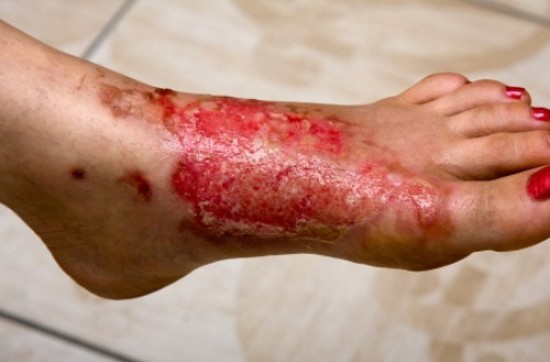Burn injuries are very common and are caused when your skin or other organ tissue comes in contact with electricity, friction, radioactivity, chemicals and radiation causing a burn.
The resulting wounds can be extremely painful. A severe burn can alter your skin permanently and could cause you to be self-conscious about your appearance, depending on where the burn is located on your body.
Burns can be challenging to cure, depending on the various degree of the burn you experienced. Sunburn is categorized as a first-degree burn, whereas a burn that causes blisters are considered second-degree burns and a burn that goes all the way through your skin is a third-degree burn.
According to the World Health Organization (WHO), burns are a serious health problem. In fact, an estimated 195,000 deaths happen annually due to burns caused by fires.
If you're someone who has survived a burn, what are the different types of burn and wound treatment options?
Depending on the degree of your burn, there are several treatment options. Typically for first- and second-degree burns, you should moisturize your skin and keep the burn area covered. However, due to the severity of third-degree burns, you may need surgery.
One surgical option is a skin graft. This procedure involves a skin transplant, taking skin from a healthy, larger area of your body (butt or inner thigh) and grafting it on the wound location.
What are some other treatment options if you've suffered from a third-degree burn?
Director at Brigham and Women's Hospital Burn Center, Dr. Bohdan Pomahac, shares the various types of treatment options if you have suffered a burn or resulting wound.
Severe Burns: Best Treatment Options
Burns can vary from mild to severe. Do you know the best treatment for your burn?
Additional Info
- Segment Number: 2
- Audio File: staying_well/1433sw1b.mp3
- Featured Speaker: Bohdan Pomahac, MD
- Guest Website: Brigham and Women’s Hospital
-
Guest Bio:
 Dr. Bohdan Pomahac was born and raised in the Czech Republic where he graduated from Palacky University School of Medicine.
Dr. Bohdan Pomahac was born and raised in the Czech Republic where he graduated from Palacky University School of Medicine.
He trained at Brigham and Women's Hospital (BWH), Boston, in General Surgery and then went on to a fellowship in the Harvard Plastic Surgery Program.
In 2004, Dr. Pomahac joined the staff at BWH, one of Harvard Medical School's teaching hospitals, as a Plastic Surgeon and Associate Director of the Burn Center.
Since January 2009, Dr. Pomahac has led the BWH Burn Center as Burn Director while also performing a broad range of plastic surgical and microsurgical procedures. -
Transcription:
Published in
Staying Well
Tagged under
